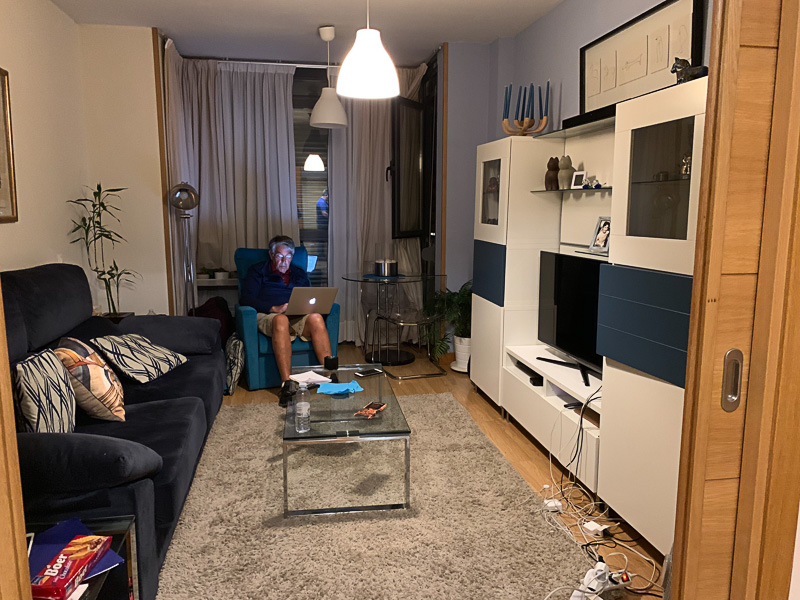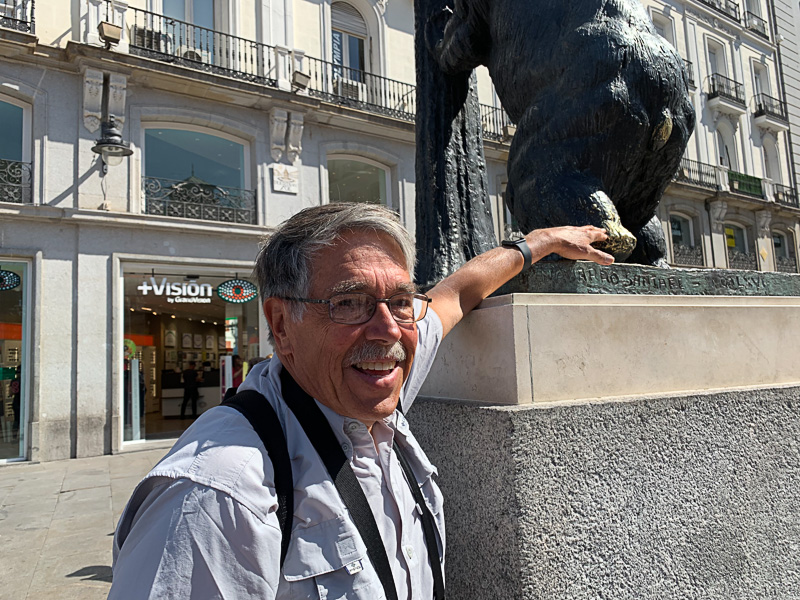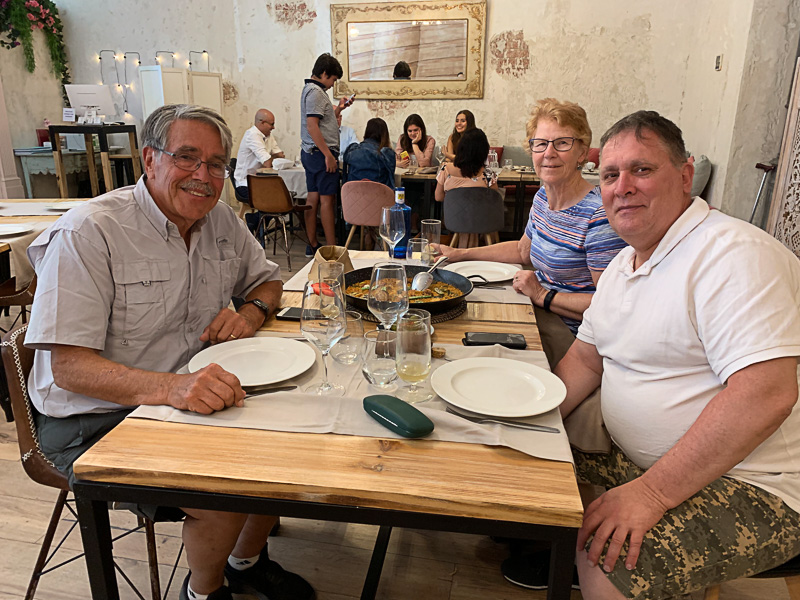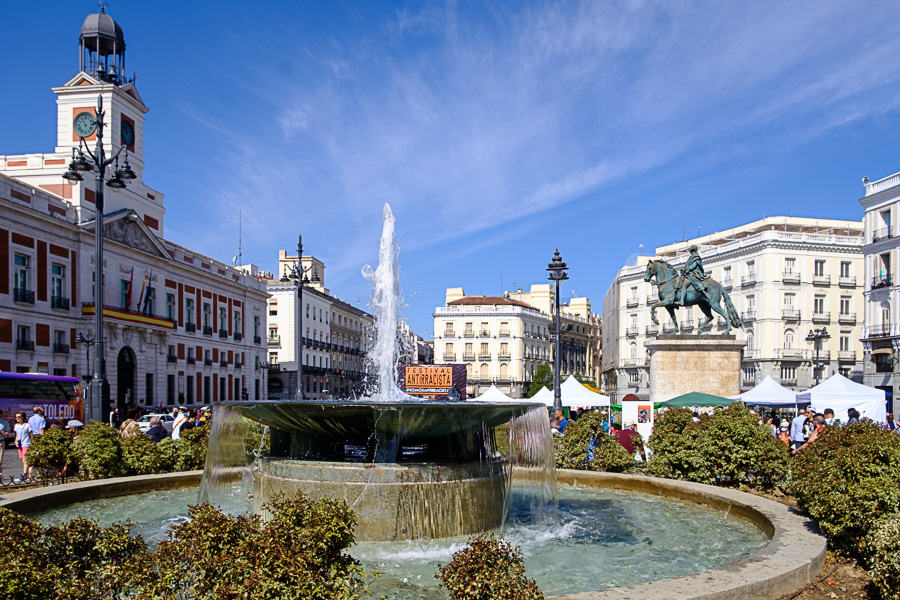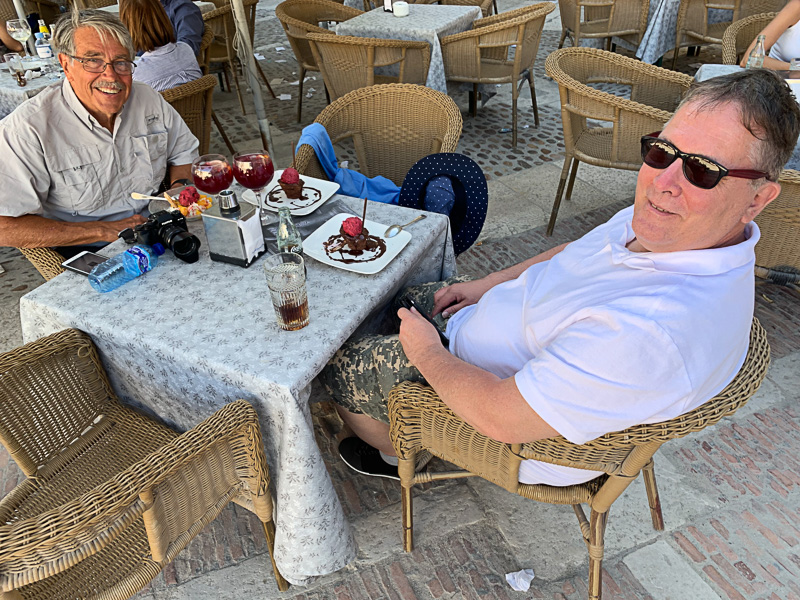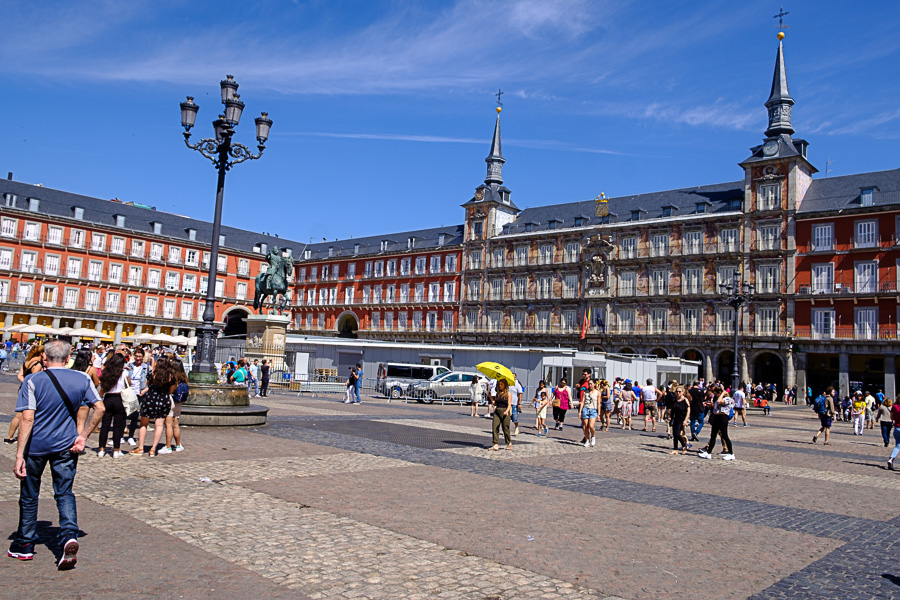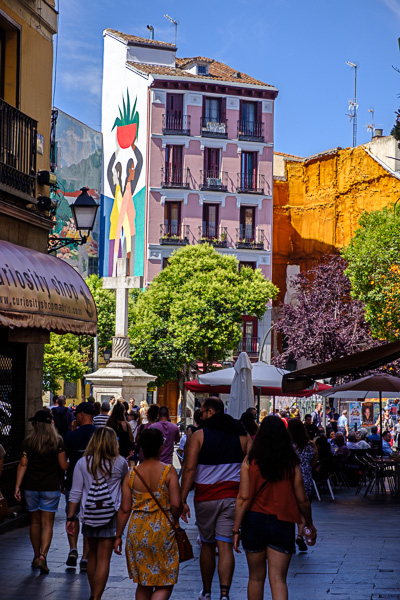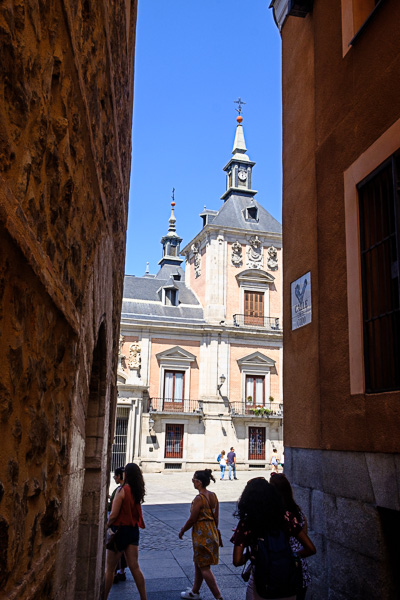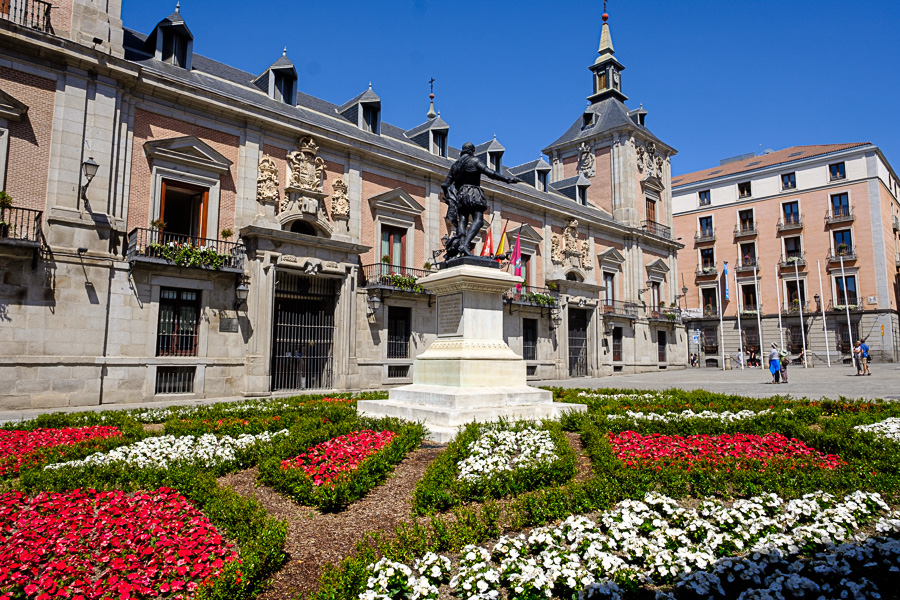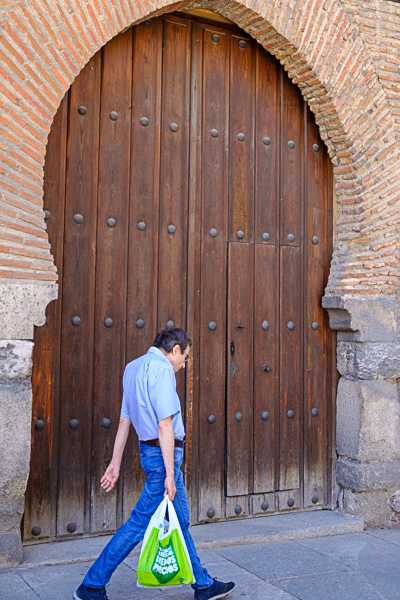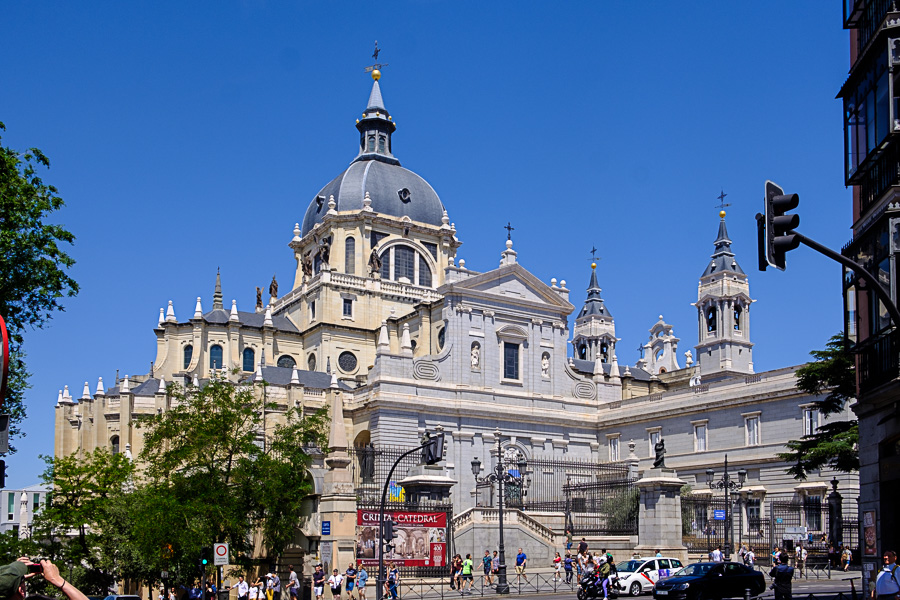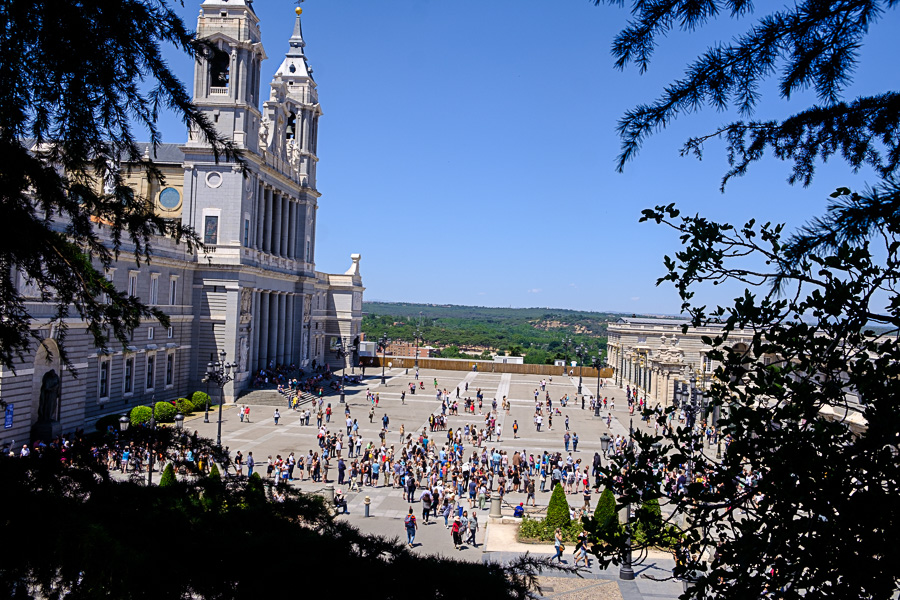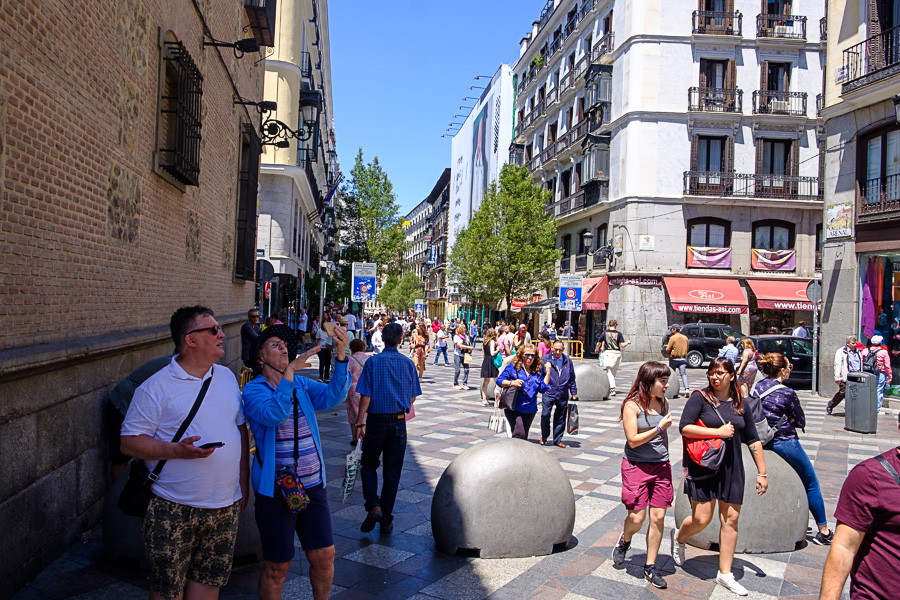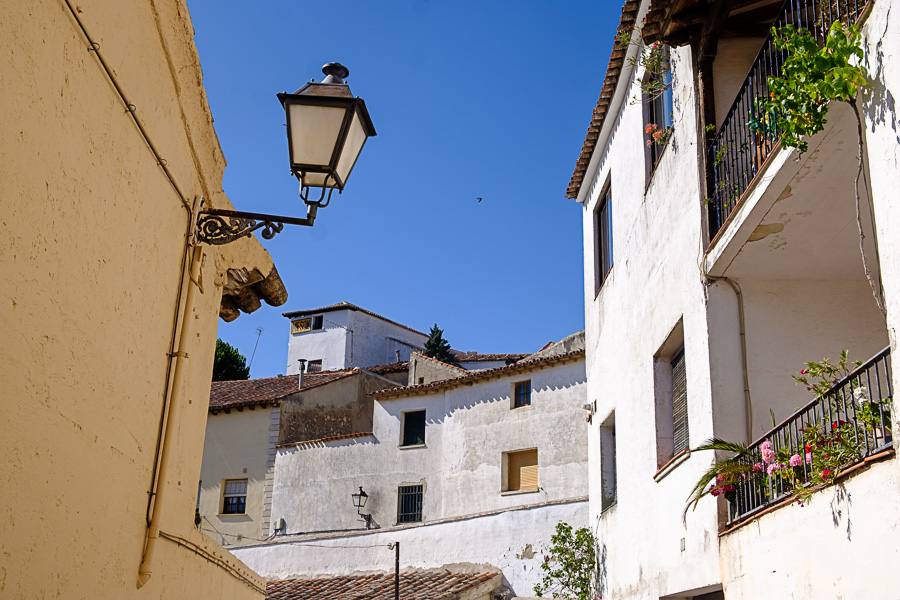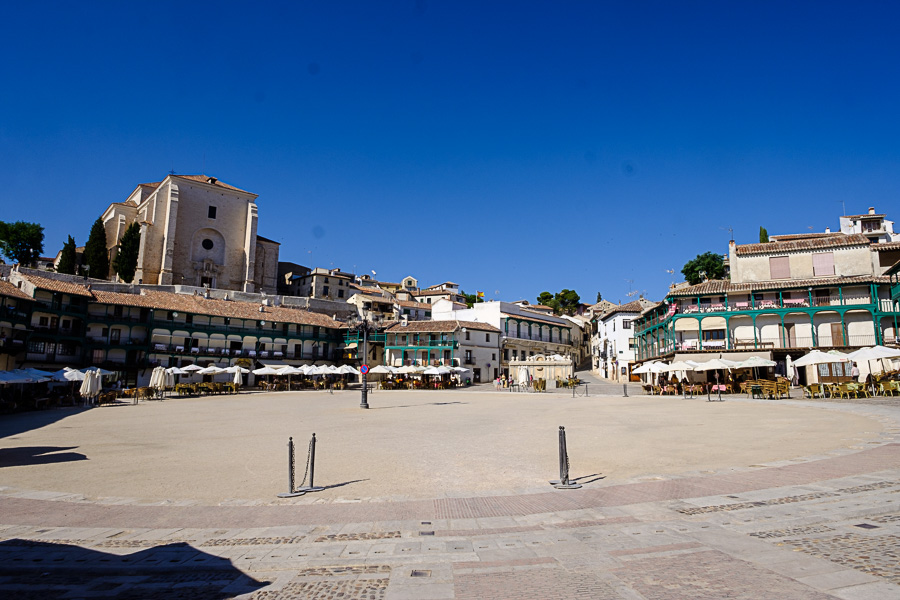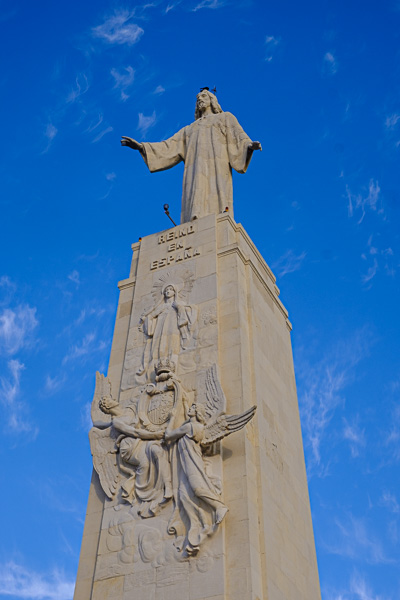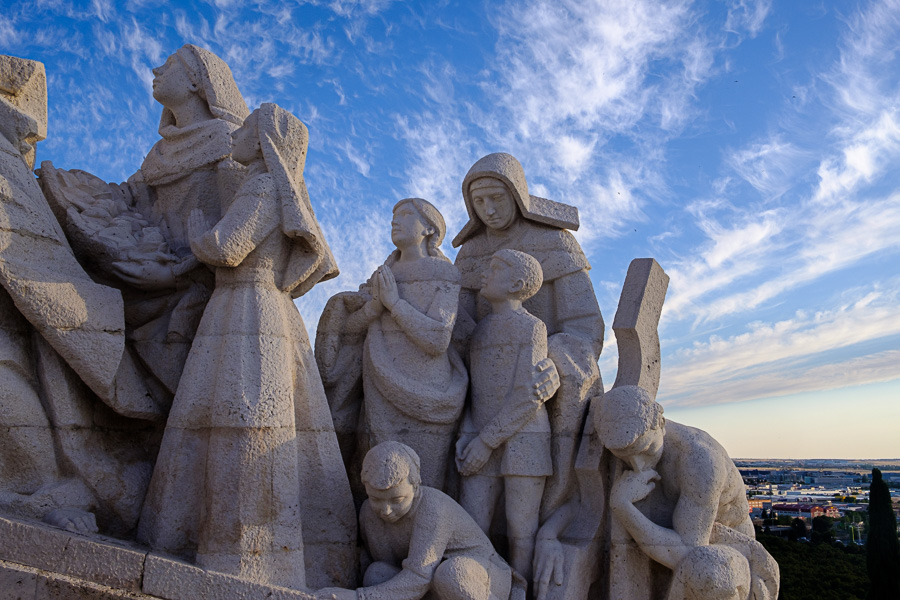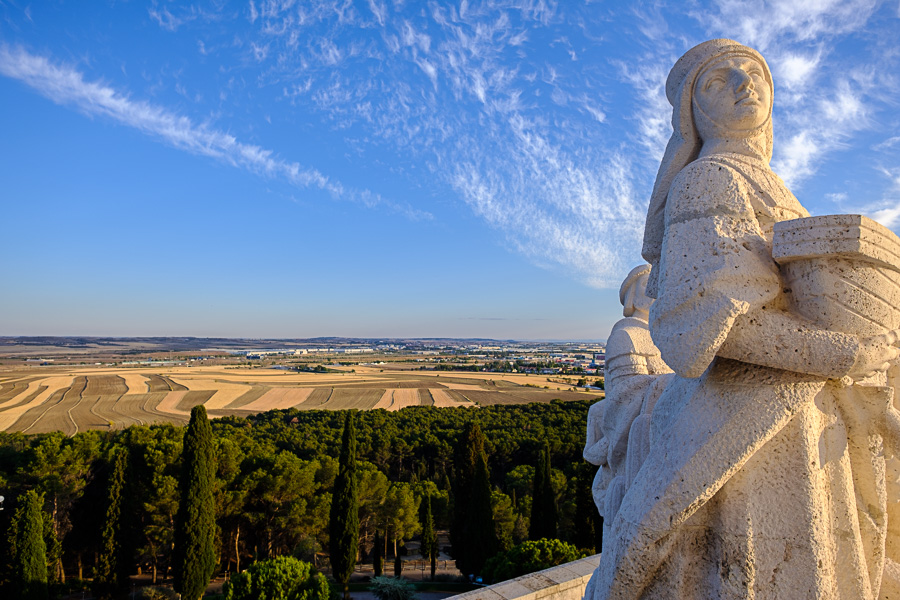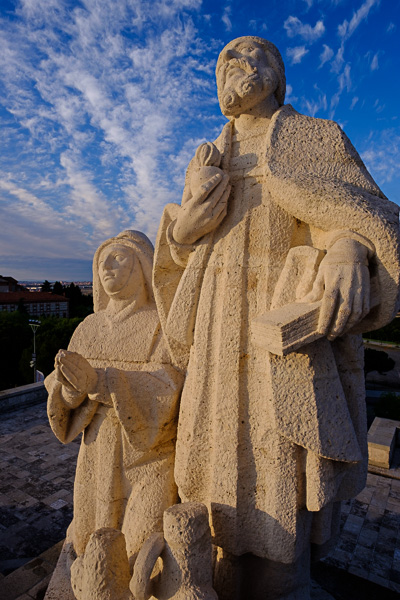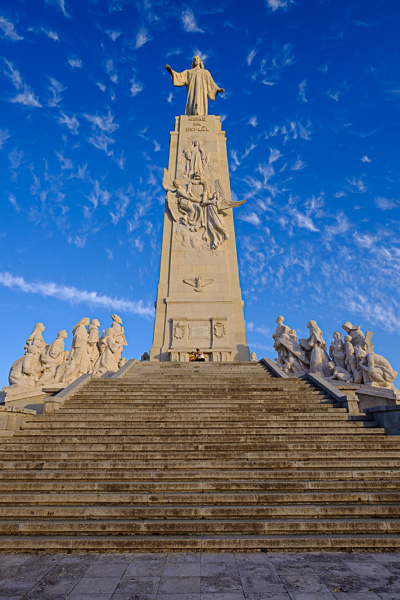Our day started with a free walking tour of Madrid, led by a young Englishman who had established residence in Madrid eight years ago. Enrique found his English accent difficult to understand. He’s most used to us Midwesterners and our flat/nonexistent accents.
This was a history tour, so let’s get started. The first modern humans occupied the Iberian Peninsula about 32,000 years ago . . . “Oh come on Jon, we’re not going to read through the complete history of Spain, of which you know little or nothing.” You’re right; let’s skip the history thing.
I would like to add a bit of additional information I learned today to what I reported yesterday. Remember Charles II, the last of the Hapsburg kings? The one who failed to leave an heir, leading to the 14-year War of Spanish Succession? Turns out it wasn’t his fault. The four immediate ancestors of Charles II’s father married first cousins. His dad married a niece. Charlie II was drawing from the shallow end of the DNA pool and was beset with terrible physical deformities. No wonder he couldn’t sire a kid despite trying with two wives. It was time to send the Hapsburgs packing.
And remember the first Bourbon king of Spain? The grandson of the Sun King (Louis XIV) of France? King Philip V? He didn’t spend all of his time at the hunting lodge at San Ildefonso. He did show up occasionally at the office in the royal palace in Madrid. The palace burned down during his reign: cause unknown. The most popular conspiracy theory is that Philip V himself set the fire. After the smoke cleared, he rebuilt it in the style of his boyhood home(s) in France. It turned out to have more rooms than any European royal palace. The circumstantial evidence is strong pointing to his guilt. But then again, who’s going to prosecute a sitting king? “Off with his head!”
Our guide showed us many of the popular sites in downtown Madrid. We started in the Puerta del Sol, walked to Plaza Mayor, Plaza de la Villa and a whole bunch more in two- and one-half hours. He talked quite a bit about food: we saw the oldest restaurant in the world that is still operating, a really neat food market (Mercado de San Miguel) and learned about tapas.
Did you know where the idea of tapas came from? A king (I forget which one) stopped at an inn for a drink. The waiter, serving in a fly-infested room, feared to serve his king a glass of wine (or whatever) with a fly in the soup. Thinking quickly, he placed a slab of ham over the glass. The king said, “What’s that? And why is it so small?” Hence today’s custom in Madrid is for drinks to be served with a free small plate of food of some sort. Of course, the establishment’s hope is that you will buy more plates of food to improve the profit margins. The smart way to go drinking in Madrid is to buy one drink, eat and drink, then move on to the next establishment and repeat. By the end of the night (or by dawn the next morning) you will be well fed, assuming you can still walk after all that drinking.
Our guy served up lots of other fun facts including the three forms of execution: beheading (reserved for members of the aristocracy), hanging (for commoners; cheaper but more painful) and the most gruesome, garroting. The last garroting was performed in 1974 under Franco.
This day, our last, was once again warm but not excessively hot with blue skies and a nice breeze. But after our walking tour we were getting hungry. It took us a while, but we found a very nice restaurant serving traditional food with a modern twist. We ordered asparagus with a cheese sauce and ham croquettes to start and then traditional paella for two to finish. They brought us two nice other tapas while we waited.
I always thought paella was a seafood dish. Enrique corrected us: paella came from his father’s home town of Valencia (yes, they grow oranges in Valencia). Traditionally, it contains chicken and rabbit (tastes just like guinea pig), vegetables and sometimes sausage and of course rice with saffron. We ordered enough for two; Judy and Enrique nibbled. The pan was pretty much empty when we finished. You do the math.
Next, we drove out of town to the village of Chinchon. I really like the town, especially the Plaza Mayor, which reminded us somewhat of the square in Siena, Italy. It was late afternoon with a warm sun. We sat at an outside café and had our postres and tinto Verano (summer red wine). Very pleasant indeed.
The thing I liked most about Chinchon is that it totally lacks any important historical significance nor is it the hometown to anyone famous. That means I don’t have to google up some facts to impress you all. The town does make good use of its Plaza Mayor: there’s a wine festival, a Good Friday reenactment of the crucifixion and in October they build a temporary bull ring. In fact, Chinchon, its citizens and its bull ring were featured in the movie Around the World in Eighty Days.
Enrique then drove us to what turned out to be a most fitting final attraction for this 19-day trip: Cerro de Los Angeles, a shrine to Jesus. In the late 1800s and early 1900s, the republican factions revolted and overthrew the king. Republicans were opposed not only to royal rule but also the influence of the Catholic church. One of their actions was to blow up the shrine to Jesus on top of Los Angeles hill. Franco overthrew the republicans in the Spanish Civil War and, being a strong Catholic, rebuilt the tribute to Jesus in even more grander style. You can see the towering statue topped by Jesus in tonight’s pictures. The tribute reads: Spain under the heart of Jesus. Los Angeles is at the geographic center of both Madrid and Spain, so it is fitting that Jesus should be stand here.
Visiting Cerro de Los Angeles caused me to reflect. Franco, who did so much as a dictator to trample on human rights was a Catholic believer who made great efforts to protect the church. And the republicans, dedicated to restoring human rights suppressed by royalty and the church, made great efforts to destroy religion in Spain. No one’s perfect, I guess; everyone has a good side and a bad side.
So tomorrow we leave. We’re anxious to get home to see the grandkids and the rest but leaving is going to be hard. Not only have we had a good time, but these last three days we’ve had the opportunity to strengthen our relationship with Enrique. Mom and Dad loved Enrique as a son so that makes him like a brother to us. He’s shown us such a good time, instructed us in Spanish culture, has been so gracious as a host in his home and has served us such great food. Now it’s his turn to come visit us again, which will then make it our turn to visit him in Spain another time. Thank you, Enrique!
And thanks to all of you for suffering through our daily ruminations and reports. We’ve appreciated your kind comments as we’ve gone along on our journeys.


